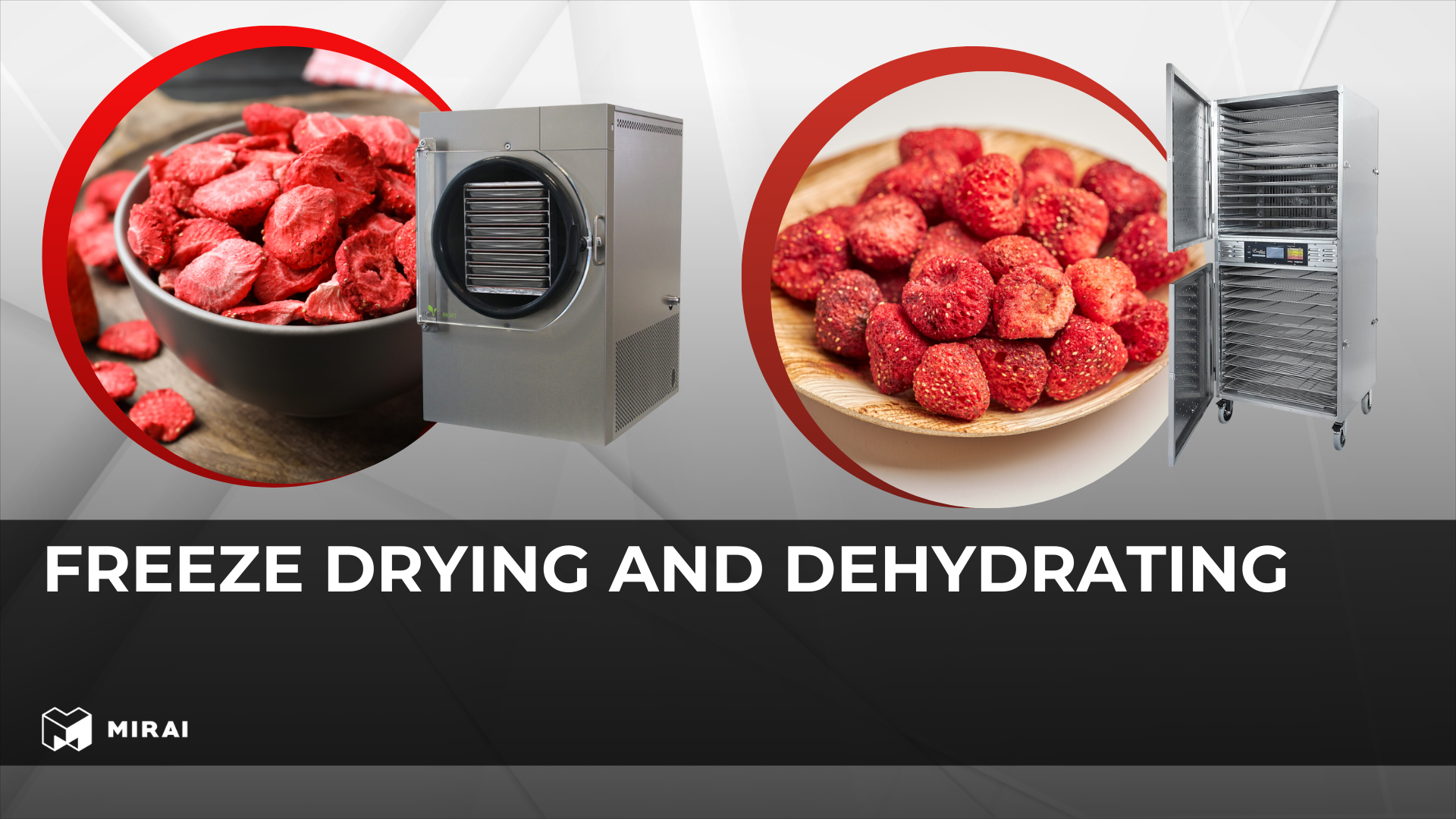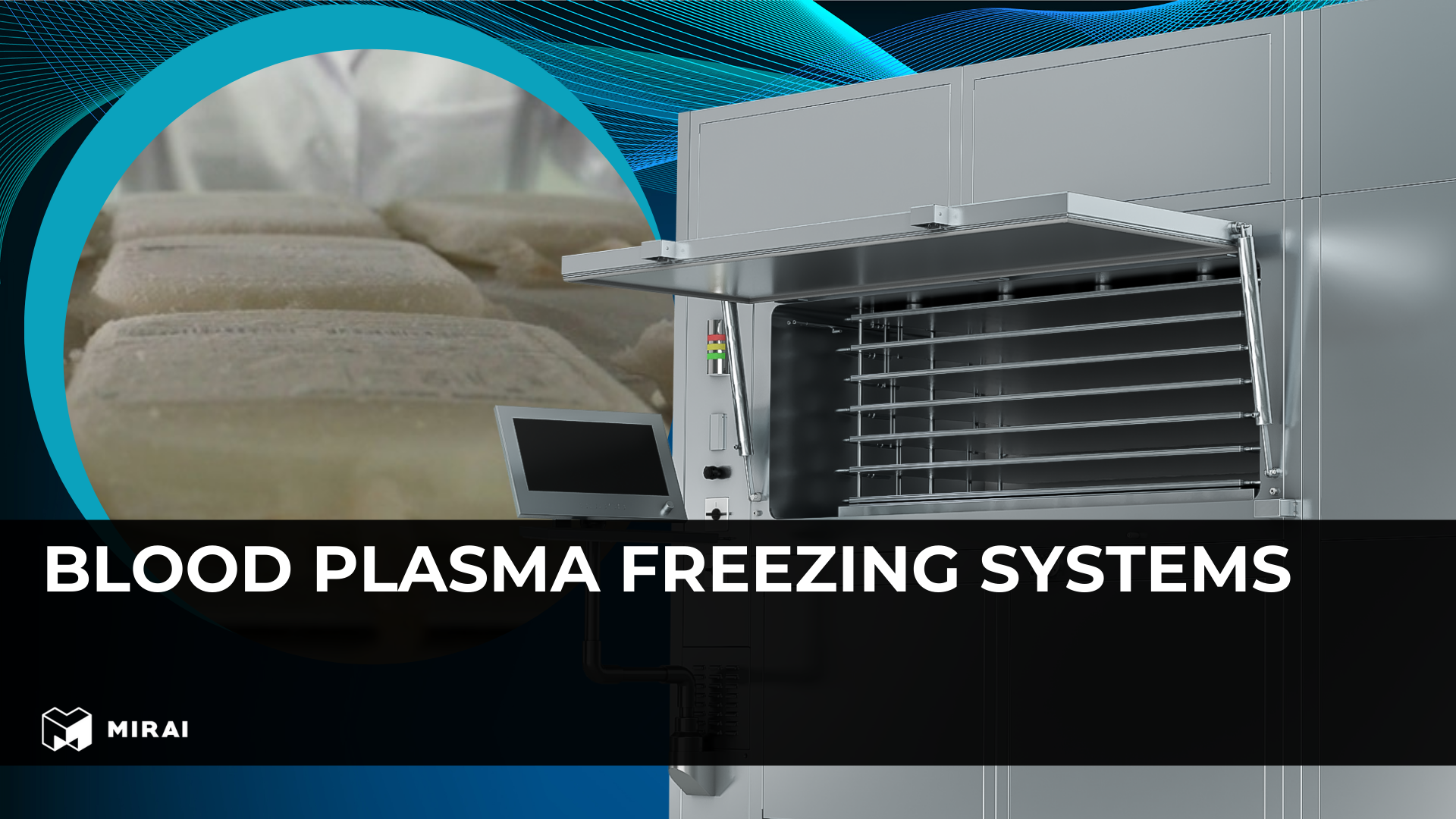Freeze Drying and Dehydrating: Unlocking a Deeper Look at Food Preservation

The pursuit of extending food life saw a variety of techniques for its conservation over centuries. Freeze drying and dehydrating stand out high amongst them, both being prevalent techniques in practice. What, therefore, distinguishes between freeze-dried and dehydrated food? Do a dehydrator and a freeze dryer mean one and the same? In this in-depth article, we will explore and contrast freeze drying and dehydrating, comparing and contrasting processes, nutritional impact, and use cases. To wrap, we will investigate Mirai Intex's role in such important processes.
What is Dehydration?
Dehydrating is a centuries-old food-preservation method in which moisture is taken out of food via heat and airflow. Dehydration drops water activity, preventing microbial and enzymatic activity that can cause food to go off. Sun-dried grapes and a food dehydrator to make jerky spring to mind. In a contrast between a food dehydrator and a freeze dryer, ease of use is a standout feature of dehydration. Dehydrators utilize a source of heat and blowers to blow warm air over food, drying out its water over a duration of time. What is then produced is lighter, less bulky, and with a concentrated flavor.
What is Freeze Drying?
Freeze drying, or lyophilization, is a complex process that entails moisture extraction through sublimation. Freeze drying is a two-step process: first, a freezation, and then a drop in atmospheric pressure, in which ice will transition directly from a state of solidity to a state of vapor, skipping its state of liquidity altogether. That is the distinguishing characteristic between freeze-dried and dehydrated foods. Freeze drying entails a vacuum pump in providing a low-pressure environment for its use. What is generated is a porous food with a rapid rehydration when water is added to it. Freeze drying preserves shape, texture, and most of the nutritional value of food in its form.
What's the Difference Between Dehydrating and Freeze-Drying?
The primary difference between freeze drying and dehydrating is in how water is removed. Dehydrating involves using heat to make moisture vapor, but freeze drying involves a vacuum and a temperature at a low level to make a transition of ice to a state of vapor, a process called sublimation. That simple variation affects the finished product’s texture, appearance, and nutritional value. So, is a dehydrator similar to a freeze dryer? Not in any shape, form, or manner. Even though both processes try to remove moisture, both processes use a different device and yield a different output. Is a freeze dryer similar to a dehydrator? Nope. Two machines for two different purposes. Simple tip: dehydration involves using heat, but freeze drying involves cold and a vacuum.
Freeze-Drying and Dehydrated Foods
The variations in processing processes result in perceivable variation in output.
These methods help to extend the shelf life of food by removing not only water but also bacteria that contribute to food spoilage.
Fruits and Vegetables
Dehydrated fruits, including dried apricots and raisins, will have a chewy mouthfeel and sweeter, concentrated flavor. Heat will cause them to darken in hue, too. Freeze-dried fruits, including freeze-dried strawberries, will preserve both shape and hue best, though. Freeze-dried fruits and vegetables will have a lighter, crunchy texture and will rehydrate in seconds, with a flavor surprisingly similar to that of its freshly prepared counterparts. Freeze-dried fruits and vegetables will preserve a larger proportion of nutritional value in comparison to dehydrated ones, with temperatures in processes of freeze drying kept at a level that minimizes loss of nutrition.
Herbs
Dehydrated herbs, including oregano and basil, can have a portion of their aromatic oils and aroma stripped off in drying. Freeze-dried herbs maintain rich colors, pungent aroma, and a significant portion of their flavor, and thus become an excellent culinary herb for use in recipes.
Which is Healthier: Dehydrated or Freeze-Dried?
In general, foods that have been frozen will maintain a higher proportion of their original vitamins and antioxidants compared with foods that have been dried out. Freeze drying at a reduced temperature protects sensitive vitamins, antioxidants, and healthy compounds. Freeze drying, in general, is a better option for nutritional value, even when both processes effectively preserve food. Regardless, both options represent a healthy alternative to most processed snacks, offering a way to enjoy fruits and vegetables even when out of season.
Applications and Uses of These Techniques
Beyond food conservation, dehydration and lyophilization have significant roles in numerous industries:
Pharmaceuticals
Freeze drying is commonly used in the pharmaceutical industry to preserve sensitive medications and vaccines. This method enables long-term storage without refrigeration, making such products more widely accessible.
Cosmetics
Certain cosmetic products, including face masks and serums, apply freeze drying in a hope to preserve active ingredients and extend shelf life.
Biotechnology
Freeze drying is an important function in biotechnology for preserving cells, tissue, and enzymes and maintaining them in a viable state for medical and laboratory use.
Preservation of Papers and Objects of Art After Flooding
Freeze drying can prove to be a useful remedy for reviving water-stricken documents and artwork. Freeze drying, through a careful extraction of moisture through sublimation, keeps them safe and sound, preventing any additional deterioration and loss.
Biofuel Production
Dehydration plays a role in biofuel production in terms of minimizing moisture in biomass, enhancing efficiency in burning.
Mirai Products That Empower These Processes
Mirai Intex is involved in developing high-tech freezing and cooling technology, a critical one for freeze drying processes. With our temperature management and cryogen technology expertise, we become a critical ally for companies involved in such processes. Since our expertise is in two critical processes in freeze drying, namely, freezing and cooling, we comprehend the entire process and can provide custom-made solutions.
We have partnered with leaders in the industry, including GEA and HOF, to design and implement cutting-edge freezing technology for a range of applications. In these ventures, we have proven capable of providing efficient and dependable freezing technology for use in the high-performance requirements of the pharmaceutical industry.
All of our technology seamlessly integrates with freeze drying technology, providing for ideal performance and product integrity. Our technology is also designed to preserve cold chain integrity, a critical function for both freeze drying and frozen goods distribution for dehydration processes.
In summary, both dehydrating and freeze drying are effective food-preserving techniques, but with significant variation in terms of both process and outcome. Freeze drying will preserve a larger percentage of nutrients and have a finished-product quality level, but is a more involved, sometimes more expensive, process. Dehydrating, then, is a less involved, sometimes less expensive, alternative. Ultimately, your best bet will depend on your use and desired result. Acquaintance with both freeze-dried and dehydrated foods—and with the fact that a dehydrator IS NOT a freeze dryer—is important to effective food-preserving decision-making.
Whatever your motive for extending shelf life, creating healthy snacks, or drying valuable items, both freeze drying and dehydration have effective alternatives for your consideration.

